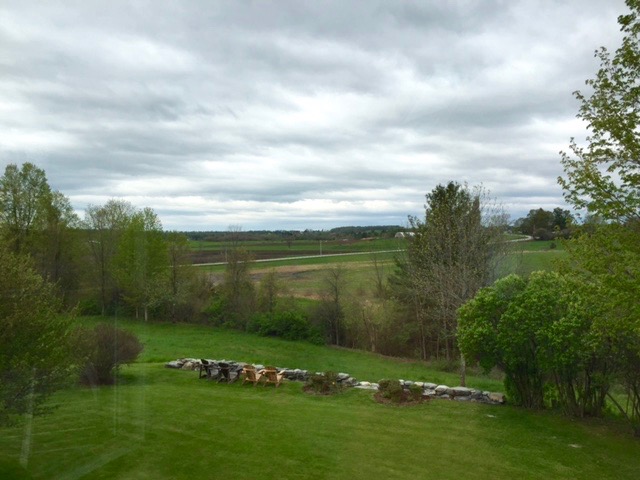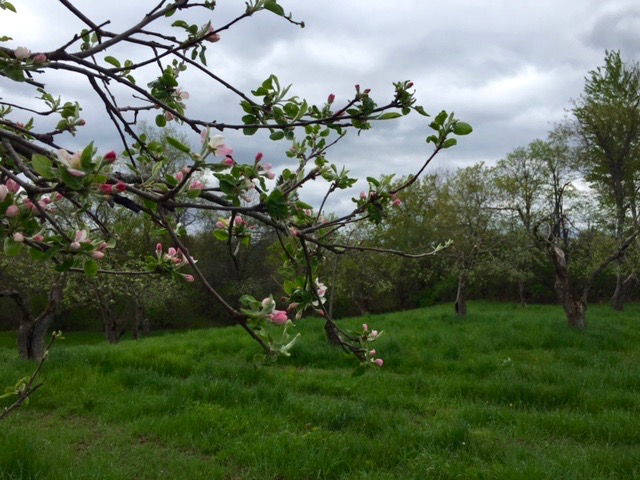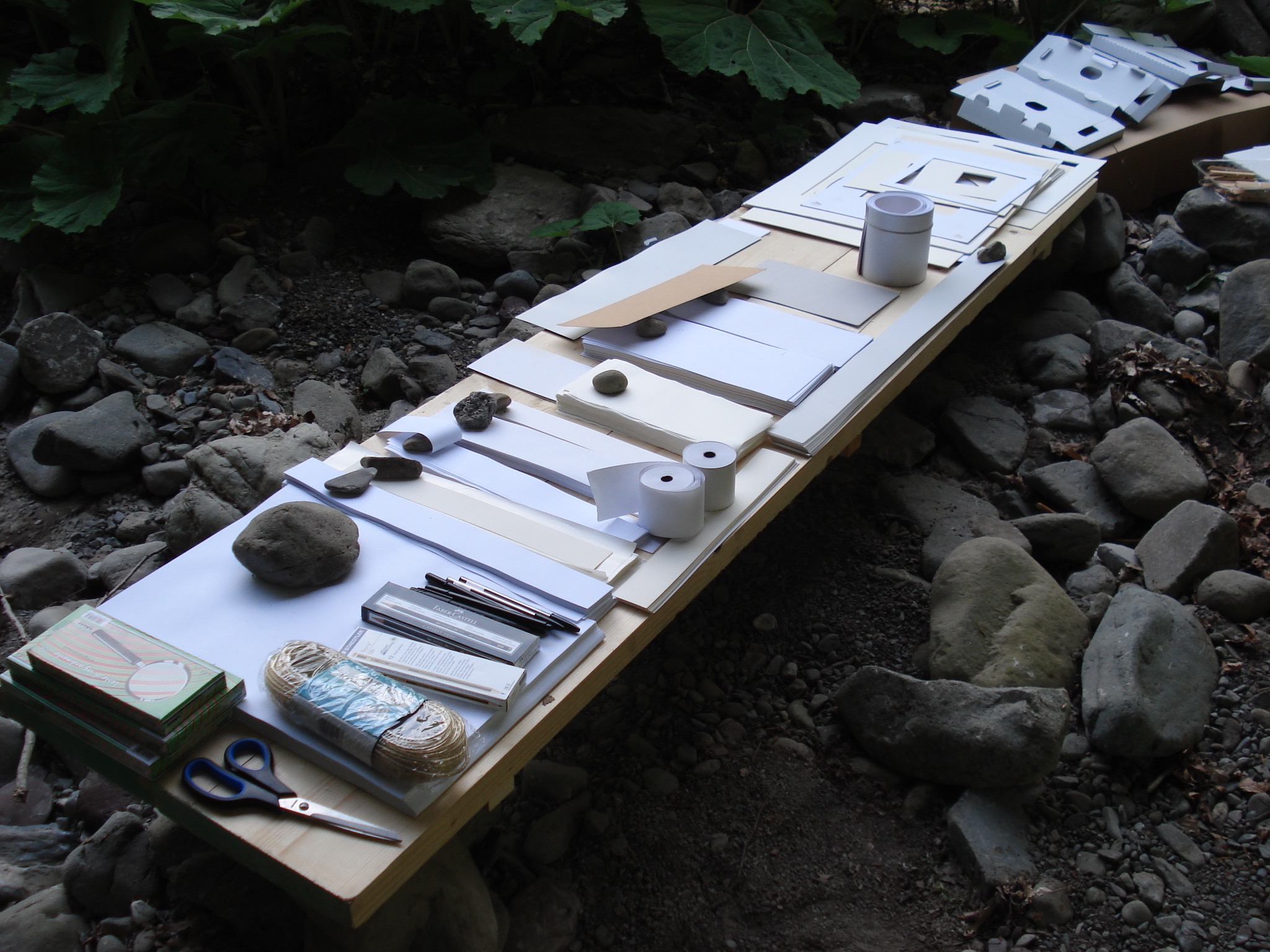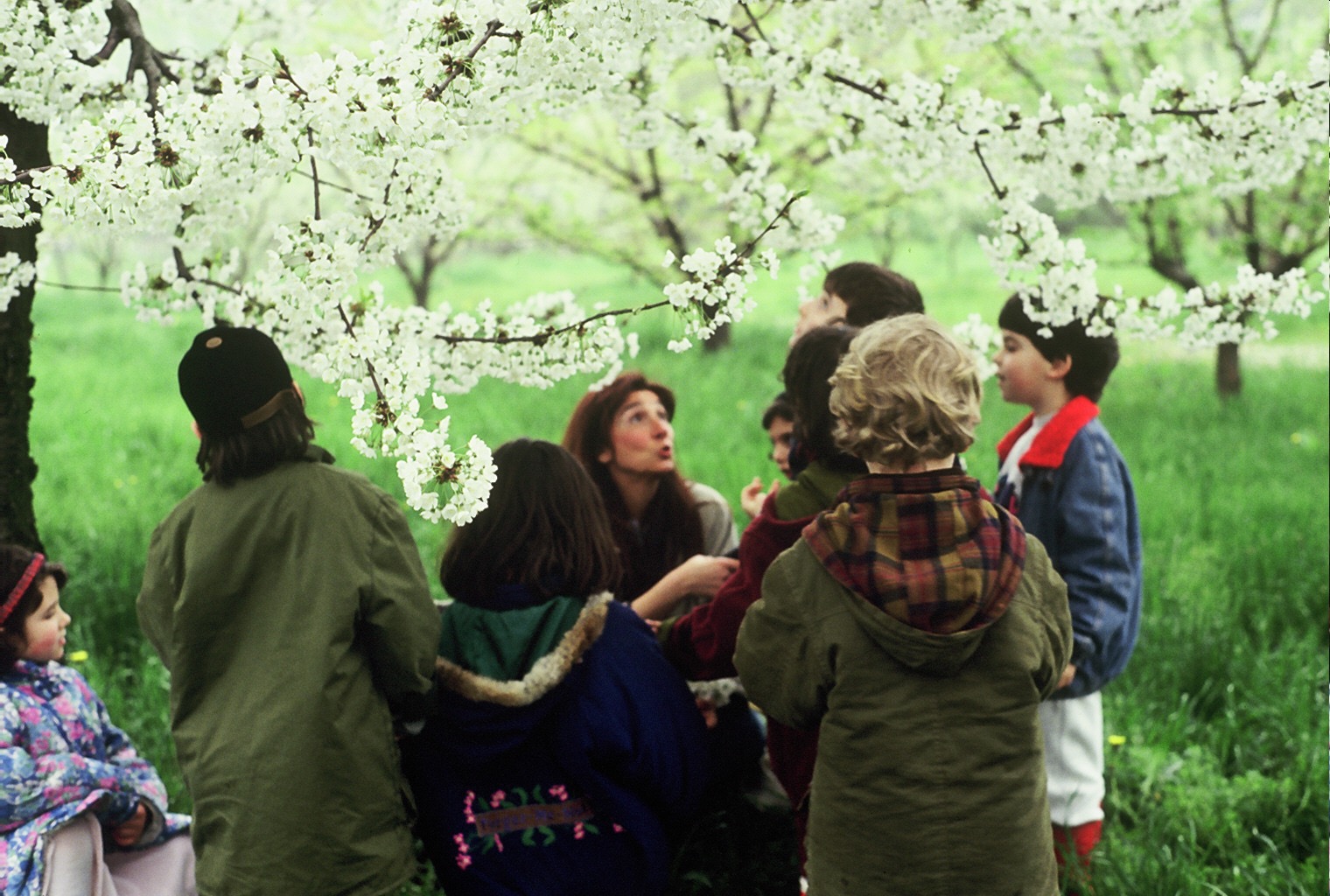 Lately, every where I turn, I see the tender, gentle, spring world taking shape around me. In Vermont, spring comes slowly amidst cold days, and gray days like today. Yet little by little, the earth turns green and the trees and shrubs move from bud to flower to leaf. We live in an old apple orchard that is now a cloud of pink and white fragile blooms. In our orchard, we live on a hill overlooking the Scholten Family Farm, 400 organic acres where we watch 80 Dutch Belt cows graze. The Scholten Family makes Weybridge Cheese for sale in local markets and beyond. Now, the fields are plowed and the cows are out.
As I watch spring unfold, among other things, I have been listening to National Public Radio's weekly broadcast, On Being, where host, Krista Tippett interviews all kinds of people. Two of my recent favorites are with cellist, Yoyo Ma, Music Happens Between the Notes, and Nobel Prize winning physicist, Frank Wilczek, Why is the World so Beautiful? In some wonderfully connected ways, Yoyo Ma and Frank Wilczek are speaking about the same things. What we can't see that holds us, curiosity and vulnerability, knowing and not knowing, being present, and that all life is in constant movement and change, while certain fundamental things remain the same.
Lately, every where I turn, I see the tender, gentle, spring world taking shape around me. In Vermont, spring comes slowly amidst cold days, and gray days like today. Yet little by little, the earth turns green and the trees and shrubs move from bud to flower to leaf. We live in an old apple orchard that is now a cloud of pink and white fragile blooms. In our orchard, we live on a hill overlooking the Scholten Family Farm, 400 organic acres where we watch 80 Dutch Belt cows graze. The Scholten Family makes Weybridge Cheese for sale in local markets and beyond. Now, the fields are plowed and the cows are out.
As I watch spring unfold, among other things, I have been listening to National Public Radio's weekly broadcast, On Being, where host, Krista Tippett interviews all kinds of people. Two of my recent favorites are with cellist, Yoyo Ma, Music Happens Between the Notes, and Nobel Prize winning physicist, Frank Wilczek, Why is the World so Beautiful? In some wonderfully connected ways, Yoyo Ma and Frank Wilczek are speaking about the same things. What we can't see that holds us, curiosity and vulnerability, knowing and not knowing, being present, and that all life is in constant movement and change, while certain fundamental things remain the same.

These ideas remind me so much of Vea Vecchi when she speaks about poetics and aesthetics. Ever since I have known Vea, she has quoted Gregory Bateson who defines aesthetics as "the pattern that connects." Rather than being something pretty or pleasing, even though it might include those things, aesthetics points to the fabric of life that holds the world together...the unseen, the seen, the in-betweens, the visible and invisible, the emotions, the sense we make of things, what we are naturally drawn to as humans, and the great mystery of the universe that we inhabit.

What are these "patterns that connect" in the world and inside us? I think of architect, Christopher Alexander whose research shows that all human beings, when given a choice, will choose a light filled room rather than a dark one, certain timeless decorative patterns over others, and a wide array of other features. He wrote about this in his book, A Pattern Language. Another fascinating aspect of being human that scholar Rhoda Kellogg has researched, shows us that children all over the world, from the beginning of human history, have made marks with sticks in the sand, hands in the mud, pencil on paper in instinctual gestures of circles, lines, dots and mandalas. From the time we are very young, we are reaching out to the world to make marks, make patterns and make meaning, to see what we have made reflect back to us who we are in the world. And then, there are the universal patterns that artist, Sabra Field describes in Cosmic Geometry, repeating patterns in the natural world, microscopic to cosmic, that humans have repeated since the beginning of history, in the man made world in design, art and architecture.
I wrote a blog post several years ago where I quoted some of a TEDx talk that Vea Vecchi gave in Reggio Emilia, Italy. I quote Vea again here as her words and ideas strongly connect to the themes of this post. These words seem particularly relevant and meaningful in our world right now .
The atelier (or studio that is not only a central place but also a way of working throughout our schools) has brought many materials and techniques, but also has illuminated a need, not only for children, but for human beings to communicate in a way that rationality and imagination travel together. We believe in a multiplicity of languages that are integrated and not separated. We believe that this makes learning and understanding more rich and more complete. Poetic thought does not separate the imaginative from the cognitive, emotion from the rational, empathy from deep investigation. It lights up all the senses and perceptions and cultivates an intense relationship with what is all around us. It constructs thoughts that are not conformist. And this creates two important elements: solidarity and participation, both of which are the foundation of democracy. To conclude, we believe that identifying and researching beauty and ethics is the indispensible foundation for a livable, sustainable future that everyone speaks about but that seems so difficult to bring about. It is only with an intelligent heart, with courage and with vision that we can proceed.



